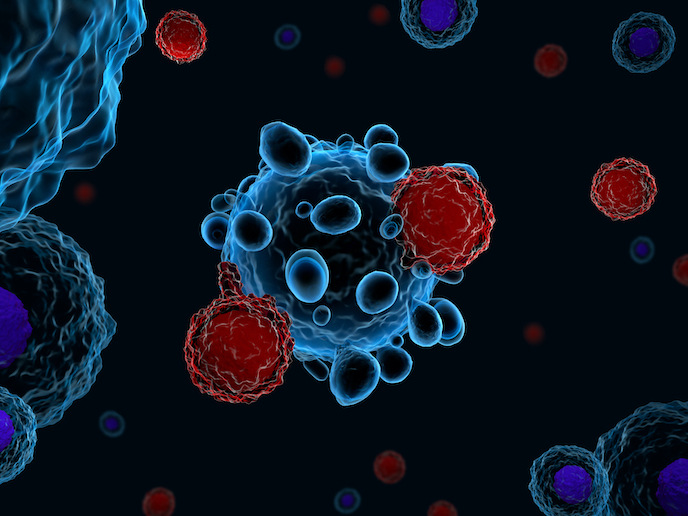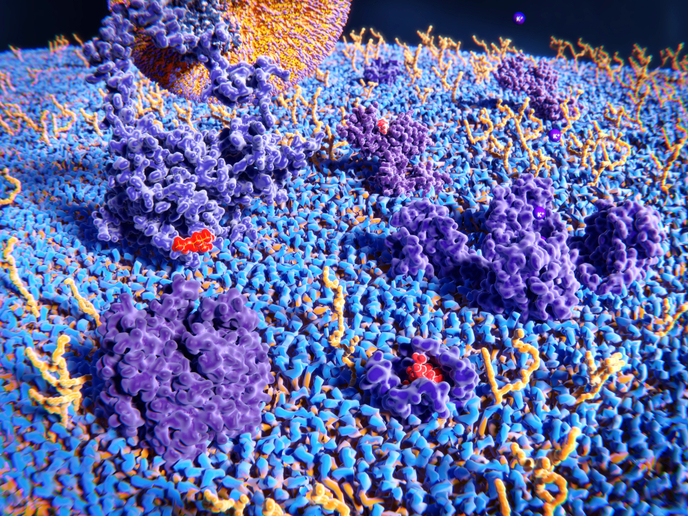Unblocking the body’s natural defence against cancer
Special immune cells in our body called T-lymphocytes play a critical role in helping us to fight infections. They work by recognising antigens, usually found on the surface of cells infected by viruses and bacteria and alerting our bodies to mount a defence. “In the early 1990s, it was discovered that these so-called ‘T-cells’ can also recognise antigens on the surface of tumour cells,” says TARG-SUP project coordinator Sophie Lucas from UCLouvain in Belgium. This project was supported by the European Research Council (ERC). “This means that cancer patients are able to mount immune responses against their own tumour cells.” This discovery has opened the door to the development of immunotherapies, which use the body’s own immune system to fight cancer. While huge progress has been made in this field, not all patients are receptive to treatments. “We know that it is not possible to boost antitumour T-cell responses in all patients,” adds Lucas. “One hypothesis is that some specialised T-cells – called regulatory T-cells or ‘Tregs’ – are too potent, and can actually inhibit antitumour activity.”
Blocking immunosuppressive activity
This was the starting point of the TARG-SUP project. Lucas wanted to know: whether Tregs do indeed inhibit antitumour T-cell responses; how they achieve this; and whether this deleterious activity can somehow be blocked. The project built on Lucas’s previous lab work. A study of human Treg cells kept in culture in vitro had enabled her team to identify one possible mechanism whereby Tregs inhibit antitumour T-cell activity. They do this by secreting a specific messenger protein called TGF-beta which performs an immunosuppressive function. And to do that, they need another protein partner – called GARP – on their surface. “Our aim in this project was to demonstrate this activity, develop antibodies to block GARP, and see if this diminishes immunosuppression by Tregs,” notes Lucas. These antibodies were tested as potential therapeutic agents in mice. The project team demonstrated that, combined with other immunotherapy approaches, they could indeed help mice get rid of tumours.
Potential new therapies
These impressive results opened the way for human clinical trials of anti-GARP antibodies beginning in March 2019. The first phase I clinical trial is due for completion around the first quarter of 2022. “The only thing we will learn from the phase 1 trial is whether this novel therapy is not too toxic for it to proceed to phase 2,” explains Lucas. “Then finally, there will be phase 3 trials.” This is the type of trial that will determine whether the new treatment is at least as efficient as standard therapies. While it will be years before the new treatment is ready for market, Lucas is proud of the speed with which important discoveries have been made. “This ERC grant really allowed me to rapidly develop this research,” she adds. “We were able to show in just 5 years that our hypothesis about GARP was correct, even getting to the point where we have potential therapeutic agents.” Ultimately, Lucas hopes that all this hard work will eventually result in the successful development of an effective immunotherapy. Blocking immunosuppression by Tregs will help cancer patients to fight back against disease and save lives. “To get to this point within 5 years is as far as I could possibly have hoped to get,” she says.
Keywords
TARG-SUP, cancer, lymphocyte, T-cell, tumour, immunotherapies, Tregs, antibodies







